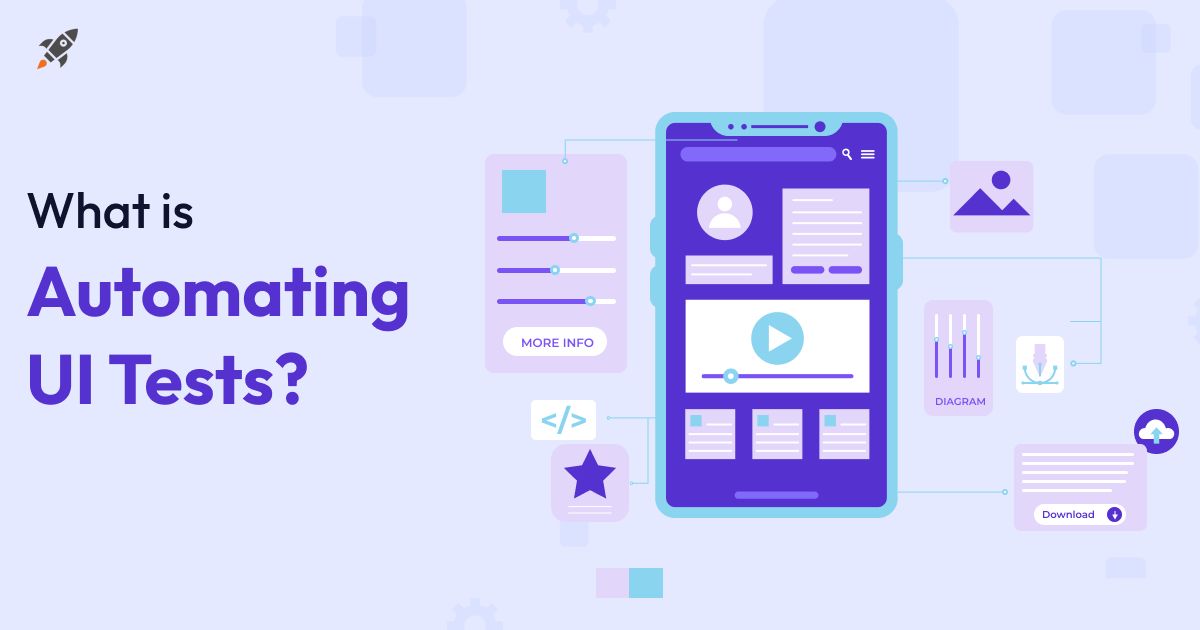Regardless of whether you are an entrepreneur, a working professional, or a homemaker, you will agree that mobile apps have become essential to your routine life. Mobile applications add convenience since they are easily accessible wherever you travel and help you communicate or make financial transactions smoothly. According to Statista, between 2019 and 2022, the time spent by users on mobile apps increased by 45%, underscoring the importance of apps in our world.
With this huge demand for mobile apps, the need for high-quality apps has also simultaneously increased. People expect exceptional user interfaces in their apps that make navigation and usability seamless. This makes the UI or GUI (Graphical User Interface) one of the most critical components of any mobile or web app. A low-quality user interface can cause users to reject or uninstall your app or post bad reviews. Hence, testing the UI of an app to verify its functionality, is indispensable to the development process.
Manually testing the UI is not a practical approach in these competitive environments, given the tight deadlines and stringent requirements. This blog will explore how automating the UI testing process is more beneficial, and the best practices organizations must follow for optimum results.
Understanding UI Testing And The Benefits Of Automating
UI testing validates the interaction of the users with the application’s interface. It includes everything, like verifying UI workflows, navigation, transition, and validating all buttons. It assesses whether the software’s design and aesthetics match customer satisfaction and expectations.
With the advent of the Agile methodology, teams are shifting to automation to perform UI tests so that they can identify issues quickly, resolve them, and release their products faster. Manual UI testing only makes sense in cases where there are just a few UI elements to be verified. However, in these digitally advanced times, where there are hundreds of UI elements to be checked, automating is the practical option. Manual testing in such scenarios will be time-consuming and error-prone.
Automated UI Testing and its Key Advantages
UI test automation enhances software quality significantly and increases customer contentment. Let us examine the benefits in more detail:
- Saves Time
Automated UI testing is faster than manual testing in all aspects of the testing process. Automation allows testers to perform UI testing regularly, enabling them to identify bugs more quickly and rectify them more efficiently.
- Greater Test Coverage
It is crucial to regularly test all features to ensure that all changes to the application do not negatively impact the existing functionality. However, testing all features manually in a reasonable amount of time is challenging. Moreover, it would be time-consuming to do so consistently. The better way is to develop test scripts to cover a wide range of use cases the application supports, which can be executed automatically with greater regularity.
- Less Chances of Human Error
In manual UI Testing, no matter how careful a tester is, the chances of missing a step, not noticing mistakes, or taking the right action are higher. In automation testing, the tests will run in the exact same way every time they are executed, and the results showing the current state of the application’s functionality will be reliable,
- Better Collaboration
Automation fosters better collaboration among testers, developers, and other stakeholders, leading to a more efficient UI testing process. It enables quick and actionable feedback to every member involved in the project.‘
- Increased Efficiency
Test automation increases the possibility of defect detection in the early stages by catching UI issues firsthand. Such an approach ensures that the application maintains a consistent UI and behavior across different environments and test runs.
Best Practices while conducting UI Automation
The following practices, when followed diligently, will help you elevate your UI testing to the next level:
- Define Your Objectives Clearly
Start UI testing only after clearly understanding your project requirements. Understand what you need to test in your UI, such as the critical functionalities like user flows and other essential elements. Know your application’s dependencies well and select a tool based on the technology used.
- Use Test Design Principles
Design principles and patterns are beneficial in UI testing and show you how to test safely and efficiently. Patterns offer clear instructions, letting users follow standardized approaches and maintain consistency.
- Prioritize Test Cases
Test cases need to be prioritized based on high-impact features, critical user flows, and areas that are most likely to impact users.
- Conduct Tests on Real Environments
It is important to test your apps on real devices and browsers to accurately simulate the actual user experience. Though emulators and simulators are convenient, they are no substitute for real environments.
- Leverage Record and Playback Tools
Tools that have record and playback features are ideal for teams where there are members with less testing experience. It allows experienced testers to record their test executions and enables fresh testers to try these tests themselves to see how they work. This saves the time and energy of the senior testers while allowing the smooth onboarding of new testers.
- Run Tests in Parallel
Since it can be time-consuming to run each UI test in succession, you need to use a tool that lets you run tests in multiple environments in parallel. This includes running them on the web, desktop, and mobile devices, both on real devices and virtual ones.
- Integrate With Your CI/CD Pipeline
You need to integrate your automated UI tests with your CI/CD processes to ensure that each code change triggers tests automatically. This will ensure early detection of issues and prevent them from spilling over to the final production stages.
- Conduct Cross-Browser Testing
Prioritize cross-browser testing across popular browsers like Safari, Chrome, Edge, and more to ensure consistent UI behavior, identify browser-specific issues, and promptly resolve them.
- Monitor The Performance
Track UI performance by conducting stress testing, load testing, and responsiveness testing. This will help determine performance bottlenecks and address them, ensuring a smooth user experience.
Conclusion
In this competitive digital world, where numerous apps are released every year, app developers must prioritize digital experience monitoring by conducting automated UI testing if they want their customers to be happy. Keeping the above best practices in mind and testing the user interface with a reliable automation testing tool will guarantee your application is free from bugs and inconsistencies and perfect in functionality and aesthetics.







